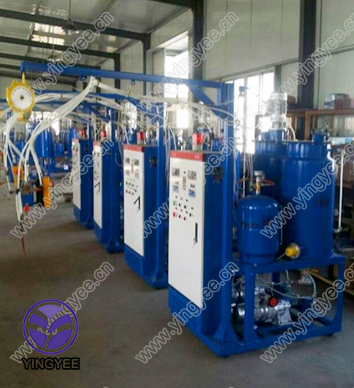
Cable Tray Roll Forming An Essential Process for Modern Infrastructure
In today’s rapidly advancing technological landscape, the efficient management of electrical cabling has become paramount. One of the most reliable solutions for organizing and supporting electrical cables is the use of cable trays. The manufacturing of these essential components often relies on a process known as roll forming, a technique that offers precise shapes and significant advantages in terms of production efficiency and material utilization.
Understanding Cable Trays
Cable trays are structures used to support insulated electrical cables used for power distribution and communication. They are essential in various applications, including industrial plants, commercial buildings, and data centers, where extensive wiring systems are employed. These trays come in various designs, including ladder, solid bottom, and perforated types, each serving specific needs depending on the environment and installation requirements.
The Roll Forming Process
Roll forming is a continuous bending operation in which a long strip of metal is passed through a series of rolls that progressively shape the material. This process is particularly well-suited for manufacturing cable trays as it allows for the production of long sections with consistent cross-sectional shapes. The advantages of roll forming include
1. High Efficiency Roll forming can produce long lengths of cable tray with minimal waste. The continuous nature of the process means that production speeds are typically higher than other methods, allowing manufacturers to meet high demand without sacrificing quality.

2. Material Versatility This technique is adaptable to various materials, including steel, aluminum, and other alloys, enabling manufacturers to offer cable trays with different properties. For instance, galvanized steel trays provide excellent corrosion resistance, making them ideal for outdoor or damp environments.
3. Customizability The roll forming process can be tailored to create specific designs and dimensions required by clients. This flexibility in design means that manufacturers can meet unique customer specifications, whether it’s for weight-bearing capabilities or aesthetic preferences.
4. Reduced Labor Costs Because the roll forming process is automated, it requires less manual intervention than traditional fabrication methods. This automation not only reduces labor costs but also minimizes the potential for human error, resulting in high-quality products.
5. Environmentally Friendly As roll forming uses a continuous strip of metal, it generates less scrap compared to shearing and punching processes. Additionally, many roll formed products can be made from recycled materials, making this a more sustainable choice for manufacturers and consumers alike.
Applications and Importance
The importance of roll-formed cable trays in modern infrastructure cannot be overstated. They facilitate efficient cable management, which is crucial for maintaining organized electrical systems and ensuring safety in installations. Furthermore, as businesses increasingly turn to automation and smart technologies, the demand for efficient, reliable cable management solutions will only continue to grow.
In conclusion, cable tray roll forming represents a vital aspect of contemporary manufacturing that supports the critical infrastructure upon which our society relies. By providing a method that is efficient, customizable, and environmentally friendly, roll forming has solidified its position as the preferred technique for producing high-quality cable trays. As we move into an era of increased electrical demands and technological advancements, the role of cable trays and the processes that create them will undoubtedly become even more significant.